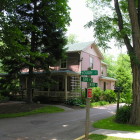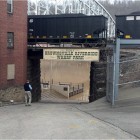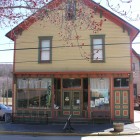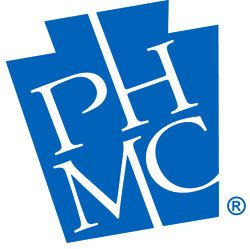There is great societal and cultural value in the preservation of our built heritage; of our historic communities and buildings. Most people understand the cultural value of preserving our history as it is illustrated by historic places. The need to experience our shared history seems to reflect a fundamental aspect of who we are as Pennsylvanians and Americans.
 What needs to be better understood, however, is that in the 21st Century a community’s historic character is also a vital component to economic sustainability. The intersection of historic and outdoor recreational assets creates a powerful marketing and investment opportunity for our towns, and facilitates the development of communities in which people want to live and work.
What needs to be better understood, however, is that in the 21st Century a community’s historic character is also a vital component to economic sustainability. The intersection of historic and outdoor recreational assets creates a powerful marketing and investment opportunity for our towns, and facilitates the development of communities in which people want to live and work.
 Tourism is the second largest industry in Pennsylvania, with heritage and nature-based tourism making up a significant chunk of those dollars. Many heritage tourism dollars are not spent visiting historic forts, battlefields or museums but on visiting communities — many along trails and recreational waterways — with authentic historic character. Communities that offer shopping, dining, touring and recreational experiences in an environment with high-quality design and historic authenticity reap tremendous economic benefits. Most trail and recreational waterway users are looking not only for recreation opportunities but also are looking for unique experiences, including the experience of visiting places with authentic historic character.
Tourism is the second largest industry in Pennsylvania, with heritage and nature-based tourism making up a significant chunk of those dollars. Many heritage tourism dollars are not spent visiting historic forts, battlefields or museums but on visiting communities — many along trails and recreational waterways — with authentic historic character. Communities that offer shopping, dining, touring and recreational experiences in an environment with high-quality design and historic authenticity reap tremendous economic benefits. Most trail and recreational waterway users are looking not only for recreation opportunities but also are looking for unique experiences, including the experience of visiting places with authentic historic character.
Importantly, heritage tourists, trail and recreational waterway users should not be defined solely as out-of-town visitors. Businesses count on visitation within their immediate trade area, and day-trail and waterway users are among the most common patrons of these resources. Providing outdoor recreation amenities and an authentic experience are as important to encouraging sustainable local business traffic as it is to attracting out-of-town visitation.
That’s because historic preservation and trail and river town development, as components of economic development strategies, are not limited to the value of tourism. Indeed, knowing and understanding the historic character of our communities will prove to be a necessity well into the future as we consider revitalization efforts, community development and transportation planning.
Studies demonstrate that due to shifting economies and demographics, many businesses and people are redefining where and why they choose to locate. These studies show that the existence of authentic historic character is often one of several factors considered when companies and individuals assess a community’s most valuable assets.
 Many Americans, including the demographic cadres of the retiring and affluent Baby Boomers, the much younger Millennial Generation, and what is sometimes called the Creative Class have the freedom to locate wherever they choose. Significant segments of these demographic groups value authenticity and an experiential sense of place in determining where they call home and where they choose to work.
Many Americans, including the demographic cadres of the retiring and affluent Baby Boomers, the much younger Millennial Generation, and what is sometimes called the Creative Class have the freedom to locate wherever they choose. Significant segments of these demographic groups value authenticity and an experiential sense of place in determining where they call home and where they choose to work.
Perhaps counter-intuitively, studies suggest significant numbers of the Boomer and Millennial demographic groups share a vision of their ideal community. This vision is, in part, of a town that offers historic character, enriching outdoor recreation, access to technology and amenities within walking distance.
 Though components of the Boomer and Millennial demographics are looking for similar kinds of living environments, they seem to have come to this place from very different routes. Many Boomers, having lived and worked in suburban environments are now looking to retire to places that offer the aforementioned historic, recreational and other amenities.
Though components of the Boomer and Millennial demographics are looking for similar kinds of living environments, they seem to have come to this place from very different routes. Many Boomers, having lived and worked in suburban environments are now looking to retire to places that offer the aforementioned historic, recreational and other amenities.
For much of the Millennial Generation, however, new economic realities have driven them to these decisions. The Millennials have never lived in an economy based on worker/employer loyalty, where a person engages in job or career choice that last a working lifetime. This generation knows that their lifetime employment will probably include many jobs and perhaps even several career paths. For some segments of the Millennial demographic the priority is to find a place to live, first, and to manage their career paths, second.
A significant portion of the Creative Class demographic is also attracted to community character, access to technology, transportation and outdoor recreation such as trailways. The Creative Class is made up not just of artists and artisans, but also includes professionals who work in design, engineering, information technology, consulting and research. Many of these folks are able to live anywhere they wish due to the technologies they utilize and their work patterns.
 And finally, recent surveys have also shown that local residents, when discussing what they value in their communities, often make no distinction between access to outdoor recreation, natural resource and open space conservation and historic preservation.
And finally, recent surveys have also shown that local residents, when discussing what they value in their communities, often make no distinction between access to outdoor recreation, natural resource and open space conservation and historic preservation.
What all this means is that the historic character of our communities is a definable economic asset; that the historic character of a community has a real, intrinsic economic value. Communities that do not take that value into account when creating economic development strategies will not reflect economic reality nor appeal to significant segments of emerging demographics. This is especially true of communities located on trails and recreational waterways. Preserving, marketing and investing in historic properties enhances the unique, vibrant qualities of our towns, strengthening their appeal as destinations of choice for residents, entrepreneurs, investors and tourists. It is up to all of us engaged in historic preservation to help position our communities to make the best economic choices.

Leave a Reply